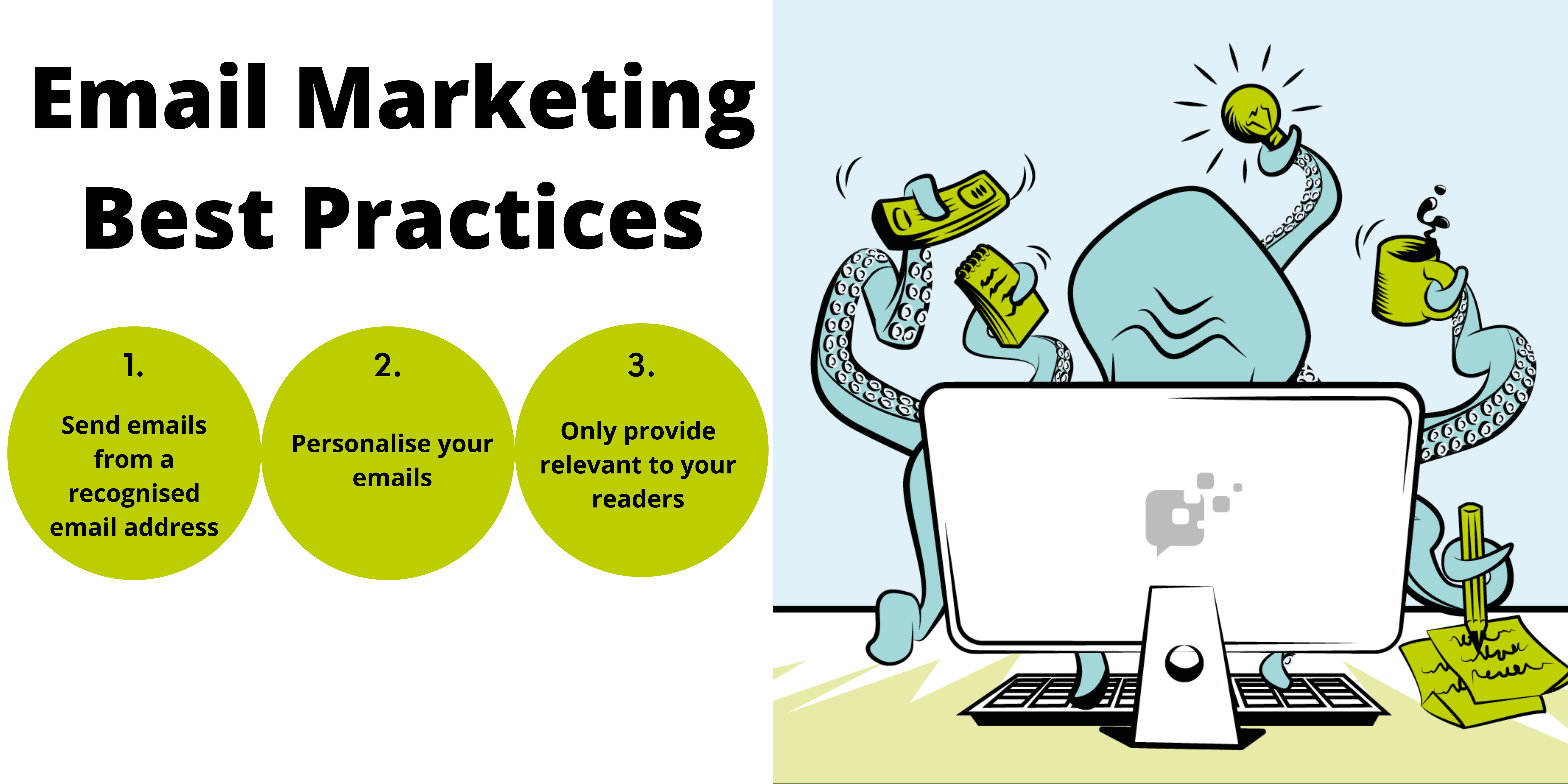The most important factors of getting your emails open and read
Statista predicts that the number of global e-mail users is set to grow from 4 billion in 2020, to 4.6 billion users in 2025. Knowing this, our question then becomes “How do we get the most out of our email marketing activities?”
The art of mastering your email marketing strategy
1. Send emails from a recognised email address
Your goal is to build trust as a branded email sender, which will encourage your recipients to open your email and engage with the content – but we both know, building trust takes time.
A determining factor as to whether your email is opened or ignored, is the “From” name (also known as the sender name) which tells your recipients who sent them the message. This is one of the first ways to build trust as a reputable sender and brand.
As a B2B business, with a direct relationship between the person and recipients it can be effective to use a person’s name. However, consider following it with a comma and the company the person is from, or use some other convention to get the company name in there and promote your brand.
One of my customer’s is known to have mailers called the “K-Mail” – emails that were originally sent from a generic email and unsurprisingly there was little engagement, until they were sent again from this specific person who is strongly recognised within the company… and guess the results; higher engagement levels.
Although, it can be slightly different for a B2C business as you want to use a brand name your recipients immediately recognise as yours.
Here are a few other things to consider when choosing your “From” name:
Keep the name as short as possible whilst reflecting your brand.
Distinguish your types of communication or subscription categories and use slightly to names.
Split test From names if you’re unsure which one will give you the best result.
Maintain brand consistency by sticking to the names you have chosen.
2. Personalise your emails
Personalisation is not a consideration;it’s a customer expectation.When recognising 80% of consumers are more likely to purchase from a brand that provides a personalised experience (https://www.yieldify.com/), this makes sense. No business wants to provide generic, irrelevant content to their audience.
Personalised content will help your brand build trust, feel more authentic, increase engagement, and build customer loyalty – the list goes on. So, how can you personalise your customer’s experience with your brand? Well, with the advancements of technology this can be made easy.
The most basic level of personalisation is addressing your customers with the typical “First Name” in either your subject line or opening line of your emails.
However, if you’re looking to take your personalisation strategy to the next level you would need something slightly more sophisticated and complex, things like dynamic content, personalised times of sending and personalised landing pages.
Technology tools, like CaboodleAI can provide you with this – personalising content to you audience.
These strategies provide significant levels of engagement, retention and most importantly, revenue.
3. Relevant content
Sharing relevant content to your audience can be of somewhat a challenge. What you as a brand deem to be relevant may not necessarily be reciprocated by your audience, or more importantly the individual. Relevancy is all relative person-to-person, and even that can change. However, don’t allow this to be a deterrence as understanding your audience’s needs as they evolve to provide relevant content is pivotal and will differentiate your brand from your competitors.
Only 55% of marketers think more than half of all the emails leaving their organisation are relevant to the individual recipient (DMA https://dma.org.uk/uploads/misc/marketers-email-tracker-2019.pdf).
Benefits of relevant content:
Build a content hub for your community will increase engagement levels
Creating relevant quality content will also help build your authority online. You’re more likely to rank higher if your brand is recognised as a credible place to get information.
Content increases brand awareness. Yes, your article will be seen but this also means your brand.




